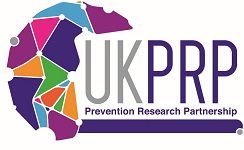Citizen Science and Dog Fouling: Community Action on the Connswater Community Greenway
Ben McAnoy, PhD researcher in Queen's University Belfast, on dog fouling, why it is a public health issue, and how his research is helping to address the problem along the Connswater Community Greenway
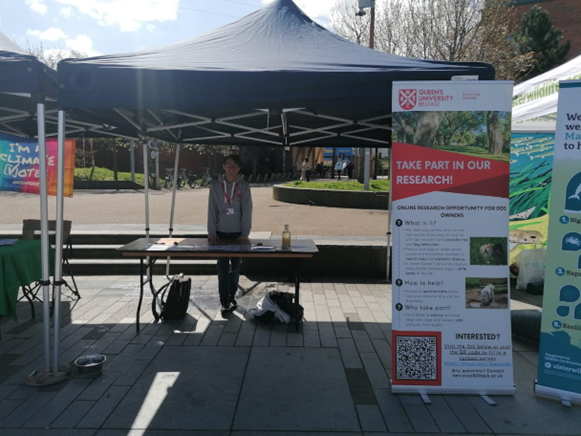
Dog fouling may seem like a minor irritation but it is also a real public health issue. Dog faeces can carry the eggs of parasites like Toxocara spp. (also known as gutworm). If these are accidentally ingested by humans, they can cause serious illness such as epilepsy, especially in children. That’s why tackling fouling in shared green spaces isn’t just about keeping things tidy. It’s about making our communities safer and healthier for everyone. In East Belfast, one group of passionate volunteers is taking the lead.
Community-led action
As part of my PhD at Queen’s University Belfast, I’ve had the privilege of working alongside EastSide Partnership, a local charity driving regeneration across East Belfast. Among many projects, they lead regular litter picks along the Connswater Community Greenway (CCG). While out on their clean-up walks, volunteers repeatedly flagged a familiar problem: persistent dog fouling along the greenway. The issue wasn’t just unpleasant—it was undermining people’s ability to enjoy the space. Together, we decided to dig deeper.
Dog fouling and citizen science
Starting in July 2024, volunteers from EastSide Partnership joined me in a simple but powerful citizen science project: poo counting. The idea was to estimate the rate of dog fouling and map out exactly where it was happening most frequently. Each month, volunteers recorded the number and location of dog faeces spotted along specific stretches of the greenway. This community-driven data collection has now been ongoing for nearly a year and the results are beginning to speak for themselves.
We’ve identified consistent hotspot areas along the path between CS Lewis Square and Victoria Park. In total there have been over 500 recorded instances of dog fouling along this stretch of 500m path. Furthermore, we can see that the dog foul is found most frequently closer to entrances and in grassy, hard-to-see areas. This suggests that targeted interventions could make a real difference in these zones. With these findings in hand, the next steps will focus on understanding why fouling is concentrated here and how we can work with the local community to reduce it.
As part of my PhD and as the next stage of this work, I will be working with dog owners who use the CCG to walk their dogs. Some dogs may be more likely to interact with potential sources of infection based on their personality, but there are currently no scientific studies to back this up. To tackle this problem, we need to know more about how dogs and their walkers are using public spaces when out on walks, so we can better understand the risks they may be exposed to. For example, has your dog ever chased a ball into the long grass? Does it eat things that you don't want it to eat? Does it roll around in the mud or drink from stagnant puddles? All of these are potential risks for parasitic disease, and these are exactly the kinds of behaviours that we'd like to hear about from you!
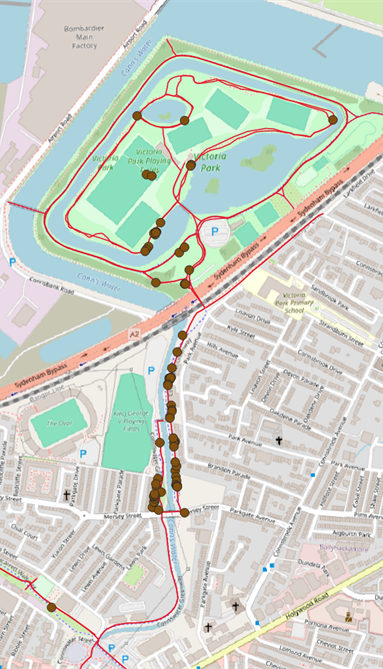
Dog fouling along the CCG seems to cluster at entrances and hard-to-see grassy areas
Moving forward
This project is a perfect example of how citizen science can support and drive public health research. Volunteers not only raised the issue but helped collect the evidence to back it up. Their insights, commitment, and local knowledge have been vital at every stage.
My research, funded by the Department for the Economy and ESCCAP UK & Ireland, aims to support exactly this kind of partnership. By combining data with public engagement, we can create targeted, effective responses to dog fouling that go beyond signs and fines. As we move forward, we hope this work can inform smarter messaging, better bin placement, and parasite awareness campaigns along the greenway and beyond. Because when it comes to shared spaces, everyone has the right to enjoy them, without watching their step.
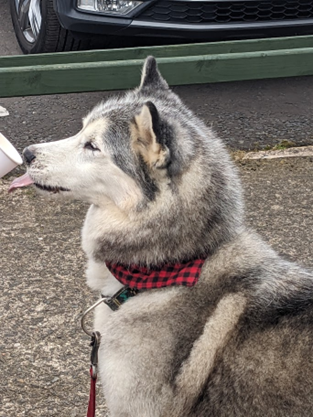
Bella enjoying a puppacino at National Trust - Divis and the Black Mountain
Get involved in the research...
If you are a dog owner in Northern Ireland and interested in taking part in this research, see below or contact Ben at bmcanoy02@qub.ac.uk.
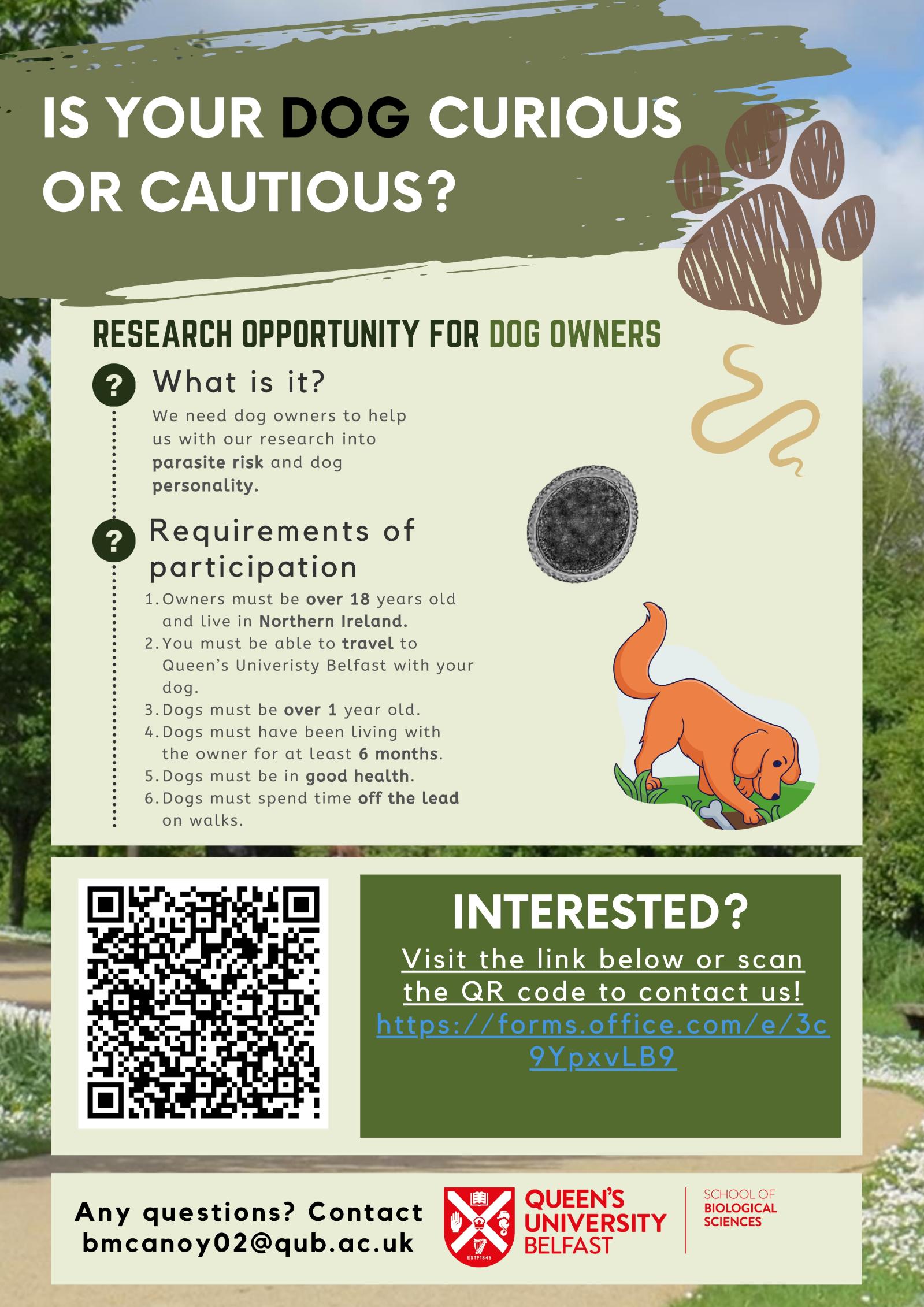
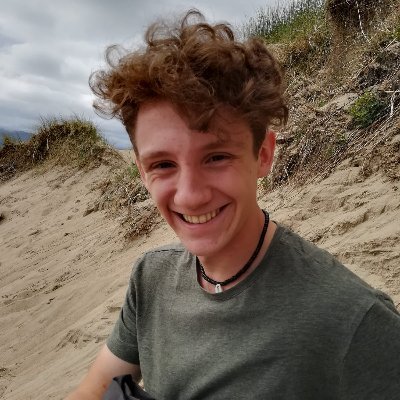
Ben McAnoy
Media
groundswell@qub.ac.uk

